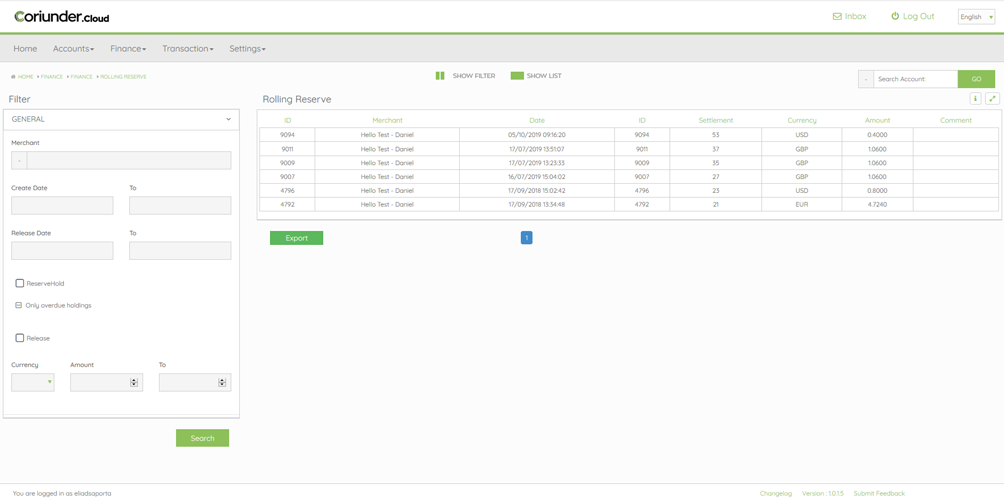
Rolling Reserve report
What's a rolling reserve?
Banks and Payment Service Providers are always at the risk of chargebacks. Chargeback Is money that is returned to the payer. In simple terms, it's the reversal of a credit card payment that comes directly from the bank.
This payer can be a consumer, merchant, and even a purchaser.
Institutions like banks need to take precautionary measures to reduce chargebacks. To minimize the risks of chargebacks, the Rolling Reserve strategy is used.
Rolling reserve can be thought of as a counterbalance to the risk of high chargeback. A Rolling Reserve is a risk management strategy to protect the Payment Service Provider (PSP) and its banks from potential loss due to chargebacks and it acts as a guard for potential chargebacks.
Acquiring banks and PSPs can collect an agreed rate of every transaction (those funds are the Rolling Reserve). The funds remain within the merchant account, but the bank releases the accumulated funds to the merchant at a scheduled date.
For example, a merchant has transactions of a total of $10,000, the related bank or Payment Service Provider will withhold an agreed percentage of the total payment, say 10%. This can also vary from bank to bank and from merchant to merchant. The total amount is $10,000, and the amount withheld by the bank or payment service provider is $1000 (10%). This amount will still be the possession of the merchant but will not be accessible by the merchant until a specific date. The $1000 will be released into the merchants' account on a set date. (Usually 3-6 months)
Those funds of the credit card volume processed will be secured to cover for the potential business risk relating to chargebacks. In our example, $1000 will act as security. This amount will be used to cover the potential risks of chargebacks.
Who needs rolling reserves?
In contrast, some businesses have a background associated with the high-risk industry due to high chargebacks rates. These types of business and merchants usually being charged with rolling reserves. They must deal with the risks of high chargebacks.
How does it work?
Rolling reserves work simply. The acquiring banks calculate the rolling reserve amount based on a certain percentage of each transaction (for example, between 5-15% on every transaction).
This percentage is predefined by a mutual understanding of the bank and the merchant and its part of the commercial terms agreed in the merchant agreement.
The riskier your business is, the higher rate you’ll pay. If the risk of chargebacks is low, then the percentage can be kept low. It all depends on your type of business, type of products, or services that you are selling.
Rolling reserves are kept on hold for a defined period and will be released at the end of this period.
Rolling Reserve Reports
The Admin Reports interface provides you with all the necessary information that you need as an admin.
Rolling reserve reports is one thing that the Admin Reports interface will provide you.
You will find information regarding Reserved amounts, already Released amounts, and total balance of rolling reserve for each merchant or debit company that you work with.
As well as Rolling Reserve report for the Admin’s, the system also provides an easy to read and understand Rolling Reserve reports for the merchants.
Schedule a Demo call today with one of our teammates and understand more about how Rolling Reserve takes place in your business.
Failed Statistics
 PREVIOUS POST
PREVIOUS POST
The Partner Control Panel
NEXT POST
